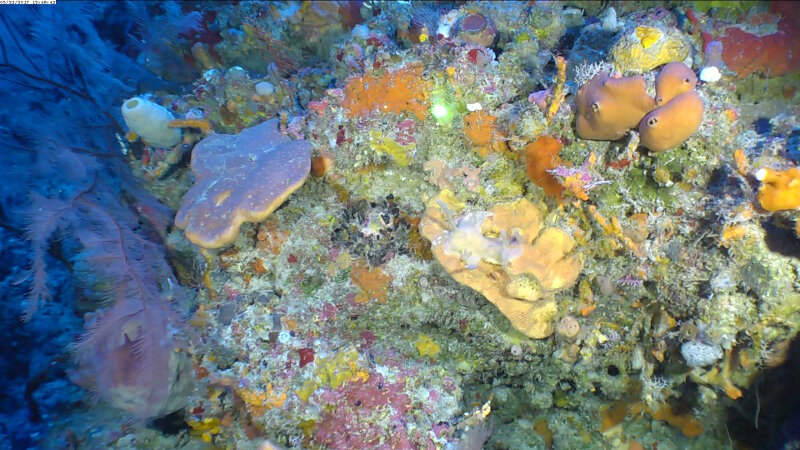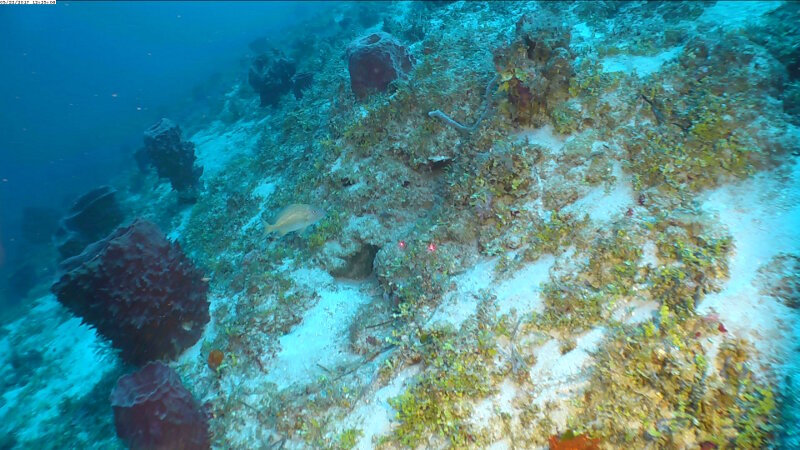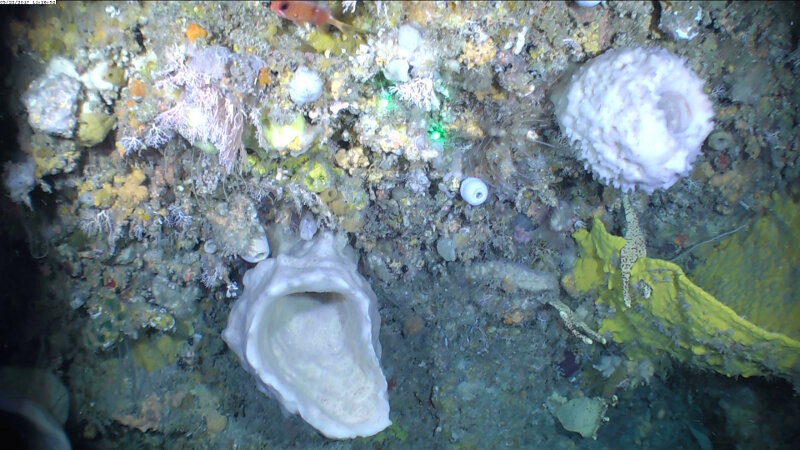
By Maria Cristina Diaz, Affiliated Research Professor - Harbor Branch Oceanographic Institute at Florida Atlantic University
Linnet Busutil, Researcher and Head of Benthos Department - Institute of Marine Sciences (ICIMAR-CITMA)
May 25, 2017

A sponge community in the deep mesophotic zone in Cabo San Antonio. Image courtesy of Cuba’s Twilight Zone Reefs and Their Regional Connectivity. Download larger version (jpg, 562 KB).
As we continue our navigation, observations, and collections of Cuban reefs, we group twice a day, first at 8 a.m., later at 2 p.m. The remotely operated vehicle (ROV) pilot and the scientists, one Cuban and one U.S. expert, sit in pairs, and we then explore the twilight zone of Cuban reefs.

Between 60 and 40 meters, sponges, like totems, guard the reefs. Image courtesy of Cuba’s Twilight Zone Reefs and Their Regional Connectivity. Download larger version (jpg, 520 KB).
When the currents at Cabo San Antonio, the western-most point of Cuba, were too strong to allow ROV diving, we had to move to the north to avoid them. That dive took place at 11 a.m., in front of the Rocali lighthouse. The ROV dive usually starts between 150-190 meters. At these depths we usually find a sand desert, always with a "fluorescent-yellow thin crust" that we have not been able to collect yet, welcoming us. Not in Cabo San Antonio!
Instead, we were welcomed at 170 meters by a "sponge party." Many of the species we have observed at 100-125 meters were there, daring the abyss, in smaller sizes, but present. But this was not our only surprise. Before the dive, we asked Stephanie Farrington to gather from the database a list of all the species of sponges we had recorded on the cruise. We were overwhelmed by the diversity, but we had no idea how many different things we had distinguished.
We assigned a number to each sponge identified unequivocally, and to our surprise, we have recorded 100 different species, most of them with a genus name assigned! We know this is an underestimate, since we have recorded at least five different Petrosiidae and 10 different Demospongiae, besides these 100 species. After the dive in Cabo San Antonio, 10 different species were added to the database.

The sponge party starts in Cabo San Antonio, 30 meters deeper than in previous locations: two specimens of Xestospongia and a Verongiida, a small sample of the feast. Image courtesy of Cuba’s Twilight Zone Reefs and Their Regional Connectivity. Download larger version (jpg, 447 KB).
Here are some of the amazing things we have observed about the sponge community aspects of these Cuban mesophotic reefs:
These patterns will be further studied by Linnet Busutil in her doctorate research. Definitively, Cuba's mesophotic reefs, be they refuges or centers of origin, harbor the largest diversity and biomass of sponges in the Caribbean!